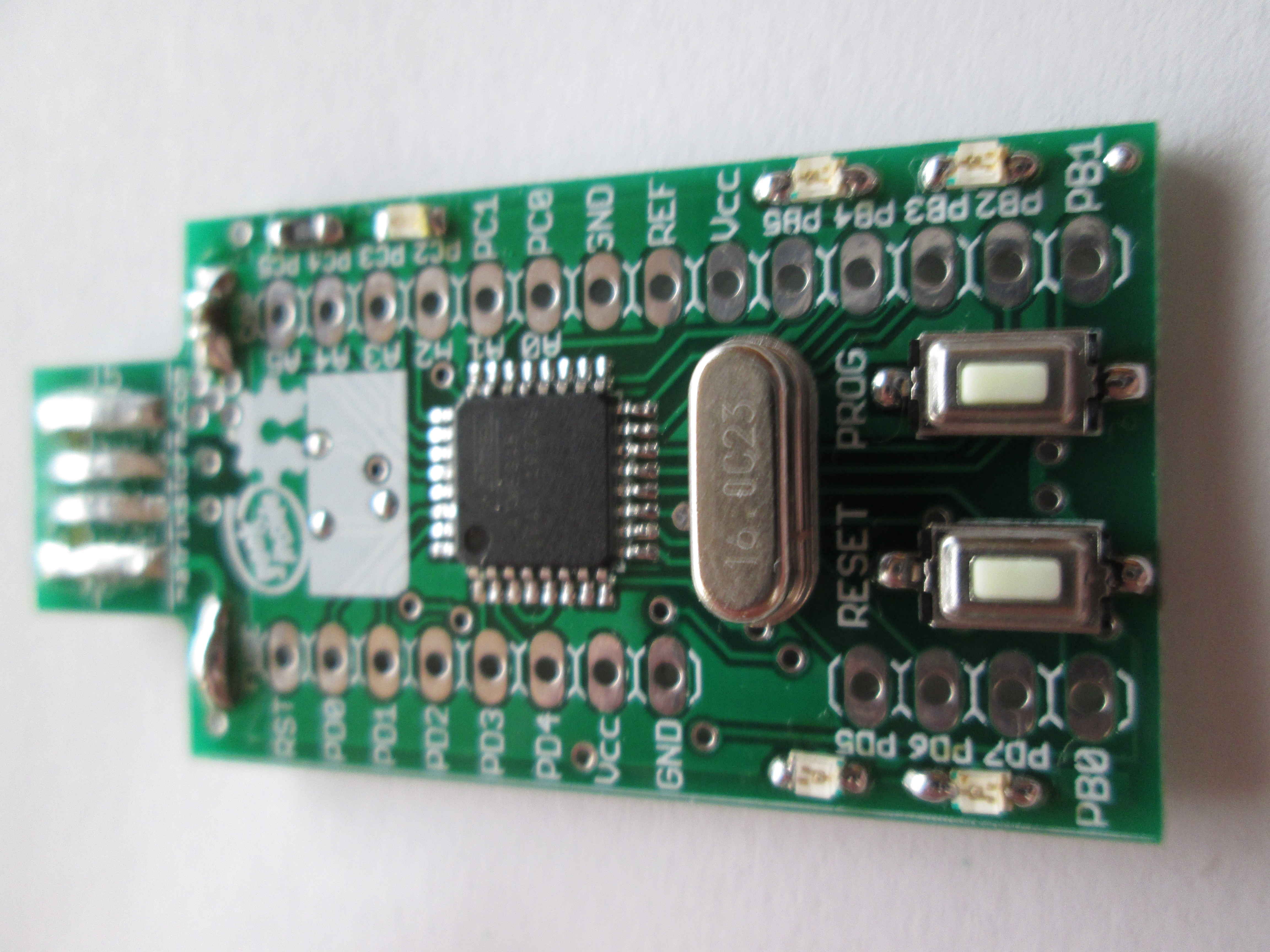tinyUSBboard vs. Adafruit's Pro Trinket
It is already quite some time ago, Adafruit released it's 5V 16MHz Pro Trinket version. Since tinyUSBboard was first, many aspects of the Pro Trinket could be done better by learning from experiences with tinyUSBboard. At least the core schematic (USB interface) is the same as tinyUSBboard Rev.3.
This page shows a technical comparism of both devices and explains why tinyUSBboard still is the superior board in most categories. If you think there is sth. incorrect, or if you wish to add further arguments: Please write them to me for further improving the page.
I hope you will come to the same conclusion and decide in favour for tinyUSBboard when you have the choice between both devices.
| attribute / feature |
tinyUSBboard |
Pro Trinket |
|---|---|---|
sourceavailability |
hardware description files and software source-code freely and public with support availablecompletly DIY enabled - no direct buy necessary(uncommercial / non-profit) |
hardware description only as picturesunsupported source code(commercial / profit) |
front view |
(c) Adafruit, Pro Trinket |
|
price |
$4.99 (Rev.4 as kit)$6.00 (Rev.3 as kit) |
$9.95 |
dimensions |
50mm x 24mm x 1.6mm (Rev.4)80mm x 25mm x 5.0mm (Rev.3) |
38mm x 18mm x 2.0mm |
smallestpart |
0805TQFP32 |
0603QFN32 |
USBinterface |
USB-A connector(directly plugable) |
micro USB socket(needs cable) |
supportedAVRs(default) |
ATmega8, ATmega8A,ATmega88, ATmega168, ATmega328,ATmega328p |
only ATmega328p |
API andadditionalsoftware |
API, examples, firmwares, tools, HID keyboard and mouse library, HID-serial console lib and tools, Software control / script tools, Self testing firmware, Arduino integration and many many more... |
|
updatestrategy |
yes (via onboard USB) tinyUSBboard offers update-/migration firmwares for exchanging bootloaders via onboard USB. No external hardware is necessary. This way different bootloaders can be tested out also: |
none(needs external hardware) |
supportedbootloader(default) |
USBaspLoader, AVRUSBboot,BootloadHID, Arduino bootloader, In case you want to test it: Pro Trinket Bootloader ;-) (ATmega328p only, patched with tinyUSBboard's update feature, so you are able to switch between any other supported bootloader without programmer) |
Advantages against other AVR VUSB boards
Althought there are lots of AVR boards available, tinyUSBboard has because of its special design and the complete revised sourcecode of USBaspLoader some unique advantages against other AVR VUSB boards. A list with the most outstanding ones is collected here.
Hardware advantages:
- cheap and simple thanks to universal components (veroboard - no special PCB needed)
- very compact because of USB-stick form factor
- very fast datatransfers (no need for slow serial programming)
- klick-based bootloader condition (no jumper required)
- helps to conserve flash lifetime (interrupt trampolines combined with no complete chip-erase necessary)
- nearly all PINs are routed (for use on breadboards)
- USB-powered - no extra powersource needed
- do-it-yourself enabled
Software advantages:
- completly revised USBaspLoader
- lots of space optimizations
- bootloader section update-/exchangeable without any further programming device needed
- no hardware locking needed
- lots of new features
- bootloader update feature
- software lockbits
- exit-logic
- accepts ISP-clock commands
- able to read its fuses/lockbits
- fully supported flash-read (not just paged one)
- "magic values" to distinguisch different hardware-layouts
- lots of bug fixes
- fixed "fuse changed! Was 1f, and is now 0" bug
- fixed "cannot set sck period. " bug
- fixed "flash reads always 0x00 in terminal mode" bug
In case you have some comments to this section (more advantages? disadvantages?) please share them with me.

